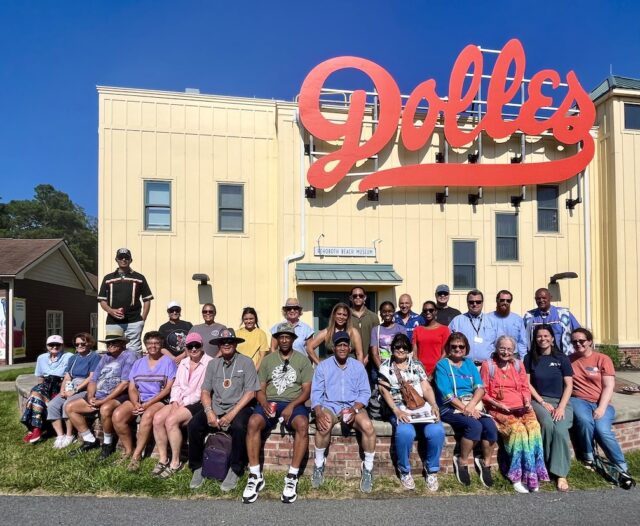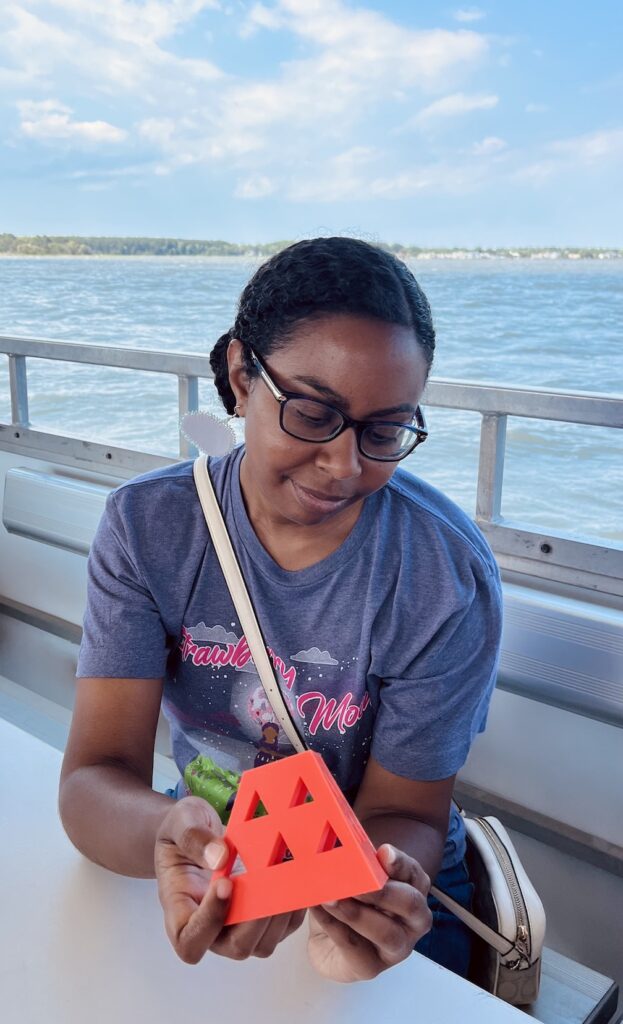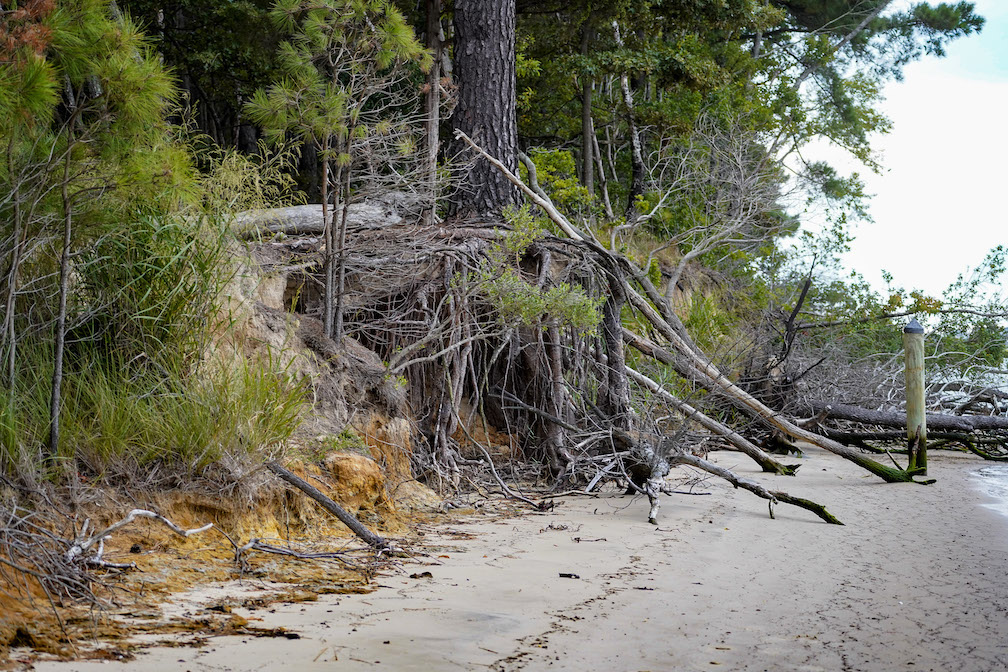
Source: DCIB
Rehoboth Beach, DE — In a historic gathering, members of the Nanticoke Tribe joined with Delaware Center for the Inland Bays (CIB) staff to inaugurate plans for a restoration project taking root at Thompson Island. The event, held on June 13th, marked a pivotal moment in recognizing the island’s cultural and environmental significance and highlighting the project aimed at safeguarding it against erosion from wave energy and rising sea levels.
Approximately 40 participants gathered for a group blessing at the Grove Park dock before boarding the Cape Water Taxi & Tours’ vessel bound for Thompson Island. For many members of the Tribe, this trip marked their first visit offshore of the island. Chief Avery, alongside representatives from CIB, including Lisa Swanger, Director of Outreach & Education, and Christophe Tulou, Executive Director, expressed appreciation for the island’s intrinsic value and cultural connections while underscoring their collective commitment to building a meaningful partnership.
“As Chief of the (wu-NAN-took-oh nee) Nanticoke Indian Tribe, I would like to sincerely thank our partner, the Delaware Center for Inland Bays on behalf of the (wu-NAN-took-oh nee) Nanticoke Nation for providing us the opportunity to visit our scared ancestral homelands,” says

Saakim (Chief) Avery Penaahtowet (Leaving Tracks). “Thompson Islands’ rich history resonates deeply with our tribe. It’s a place of reverence where our ancestors hunted, fished, and lived. It’s a mystical place with views of the Bay that captivated us and brought me within the whispers of our ancestors. A sacred burial ground that must be preserved for eternity. This transformative journey, in tandem with the revitalization of the Nanticoke language, has profoundly deepened our tribe’s connection to our ancestors. Today, we not only speak their language but also feel their enduring spirit, a testament to the profound impact of this visit. Laapiich kunaawush, (until we meet again).”

Thompson Island—situated on the Rehoboth Bay and the Lewes and Rehoboth Canal just south of Rehoboth Beach and west of Dewey Beach—is part of Delaware Seashore State Park and is a designated Natural Area Preserve. Roughly 68 acres in size, it hosts significant archaeological resources while its wetlands and forests serve as vital havens for diverse fish and wildlife. Yet, the island is plagued with severe shoreline erosion, sea-level rise threats, and high wave energy, particularly during coastal storms.
“During the initial assessment of Thompson Island, we saw pretty extreme levels of erosion on the bluffs along the southern shore and evidence of a recent loss of trees from the upland area,” says Bob Collins, CIB Manager of Programs and Facilities. “We estimated that the bluffs have eroded approximately 1 foot per year.”
To combat this, CIB is working to install a living shoreline to stabilize the island’s shoreline while improving water quality and providing habitat for fish, horseshoe crabs, terrapins, and other wildlife in the Bays. Using natural materials—such as coir fiber logs, oyster shells, and native plants—living shorelines are a nature-based solution for shoreline stabilization that can be just as effective, and in some cases more effective, than traditional hard-armoring methods such as bulkheads.
The Thompson Island project will begin fall 2024 with the installation of wave attenuation structures positioned 60-80 feet off the island’s southern shore. Crafted from precast concrete, these structures will help to dampen wave energy and support the natural accretion and/or nourishment of the shoreline, providing critical nesting habitat for horseshoe crabs and terrapins. The project will also include the restoration of 3.25 acres of tidal marsh which will promote oyster and fish habitat, and enhance the Lewes-Rehoboth canal edge that serves as a navigational/recreation waterway connecting the Inland Bays to the Delaware Bay.

Once complete, the Thompson Island living shoreline project will offer a myriad of benefits aimed at helping to preserve the history of the Nanticoke peoples and safeguard the ecological value of the precious coastal landscape.
About Delaware Center for the Inland Bays (CIB):
The Delaware Center for the Inland Bays is a nonprofit organization established in 1994, and is one of 28 National Estuary Programs. With its many partners, the Center works to preserve, protect and restore Delaware’s Inland Bays and their watershed. To learn more about the Center’s restoration work, go to inlandbays.org.







